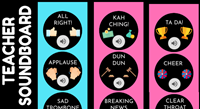http://www.edutopia.org/blog/motivating-unmotivated-chelsea-dale?utm_source=facebook&utm_medium=cpc
Aug 10
Memoranda Mathematica: A Synopsis of Facts, Formulae, and Methods (1912 book)
At this the MathFest (Washington DC 2015) lecture by Richard Guy and John Conway I learned of a book from 1912. Probably only of interest to math geeks. (yep math geek alert) I find it interesting that this reference book begins with the divisibility test for 9 and for 11 and the usefulness of knowing that 1/8 is .125
https://books.google.com/books?id=Ad3uAAAAMAAJ&pg=PP1#v=onepage&q&f=false
Jun 30
Improving Our Schools From the Inside Out
@DrOlsen314: Improving Our Schools From the Inside Out #Teachers make the difference http://t.co/f52AQZx4lM #DoSomething #edchat #TouchLives
Things are tough in the schools. Teachers, through their will, strengths, creativity, and heart, can, and do, make a difference for students.
https://twitter.com/drolsen314/status/615871362805182464
Jun 26
Notes from Ted Talk on Memory.
http://www.ted.com/talks/joshua_foer_feats_of_memory_anyone_can_do#t-1205064
Joshua Foer: Feats of memory anyone can do
See the Notes-from-Ted-Talk-on-Memory I took.
Jun 08
13 Rules that Expire
- You cannot take a bigger number from a smaller number.
- Addition and multiplication make numbers bigger.
Jun 05
Great Reference Sheets (Math)
EEWeb has a very good Math Help page with numerous Quick Reference Sheets
- Algebra – Properties
- Geometry – Shapes and Solids
- Trigonometry – Definition (has unit circle)
- Trigonometry – Laws and Identities
- Calculus – Derivatives and Limits
- Calculus – Integrals
BTW – for printing purposes, it worked better for me to download them (PDF’s) and print from the Adobe Reader than from browser.
Mar 27
Spotting Numbers and Visual Patterns
Here a two great websites that provide lots of great pattern problems.
These patterns can be used with elementary students (if you just ask number questions) through advanced algebra (if you include questions about functions).
Mathematics is often described as the study of patterns. That is exactly what Spotting Numbers and Visual Patterns do.
The interplay of geometry and numbers and algebraic thinking in these questions puts the learner squaring at the core of mathematical reasoning. Quite frankly, it doesn’t get much better than this! (OK, my opinion.)
Questions to Ask
Here are some questions. As a general rule, For Elementary: a-b; Middle School: a-d; Algebra: a-e
a. How many *** are in next figure?
b. How many *** are in next figure after that?
c. How many *** are in pattern n = 10?
d. How many *** are in pattern n = 43?
e. Generalize: How many *** are in pattern n?
Mar 27
CCSSM and PARCC: Finding the Quality Mathematics (there’s plenty)
This posting provides links to various for this presentation made at the Annual ISMAA Meeting in Dekalb, IL on 3/27/2015. My abstract is here.
Background
- CCSSM is here. PARCC page is here.
- My Common Core Math Standards: Information, Links, and Resources page is here.
PARCC
The PARCC test has met much criticism (from parents, teachers, whiners, and policy makers) as an assessment tool and a way to measure student mathematical understanding. The PARCC set too high of goals for themselves, and, as an assessment, it has an uncertain future. This session is not about the Pros and Cons of the PARCC, as an assessment.
We want to use the sample items, and CCSSM itself, to provide ideas for classroom tasks – for student learning.
Overall Comments
- The Mathematical Practices of CCSSM are helpful. pg 6 of CCSSM I like to emphasize practice 2 (Reason abstractly and quantitatively-the decontextualize and contextualize language is great) and 4 (Model with mathematics)
- The tables on pages 88 and 89 need to be emphasized. On page 89 the 3 key meanings of multiplication (column 1) are huge. The two key meanings of division (top row right two cells) are huge.
- The idea (stated in the notes near the back of CCSSM) that many of the key ideas for college and career readiness are from grades 6-8 (proportional reasoning and percents) is very good.
- The HS Algebra II PARCC test is very functions and modeling based – as it should be.
- Mental math is important (again!) – We finally have a two-part math test; with and without a calculator.
- Teachers are saying good things about CCSSM – see http://www.cincinnati.com/story/opinion/contributors/2015/02/22/common-core-transforms-math-learning/23857441/
PARCC Sample tests
See http://parcc.pearson.com/practice-tests/math/ Click the bars at the bottom to get them to open up. There are PBA and EOY tests. There are online and print versions.
- Start with Algebra II – PBA-print version
- See #8, 11, 14
- See #18 – Compost Problem wow! Great problem with lots of rates!
- Algebra II – EOY-print version
- #1 – wow!
- #2 “Select all that apply.”
- #4 – two parts
- #6 – two parts
- #7 – The need to apply skills and combine skills.
- #11 – average rate of change!
- #18 – formulas and graphs – Select all that apply
- #20 – average rate of change from a graph!
- Lots of statistics #24 1.5 standard deviations of the mean; #33
- #27 – note the questions
- Probability #28
From Bob Mann
parcc-sample-Test-ProblemsforJim – Word document
Spotting Numbers and Visual Patterns
See this posting on “Spotting Numbers and Visual Patterns” – I think it is very rich mathematically
Mar 26
Grand Challenges and Opportunities in Mathematics Education Research
Grand Challenges and Opportunities in Mathematics Education Research
NCTM statement
http://www.nctm.org/Publications/journal-for-research-in-mathematics-education/2015/Vol46/Issue2/Grand-Challenges-and-Opportunities-in-Mathematics-Education-Research/

